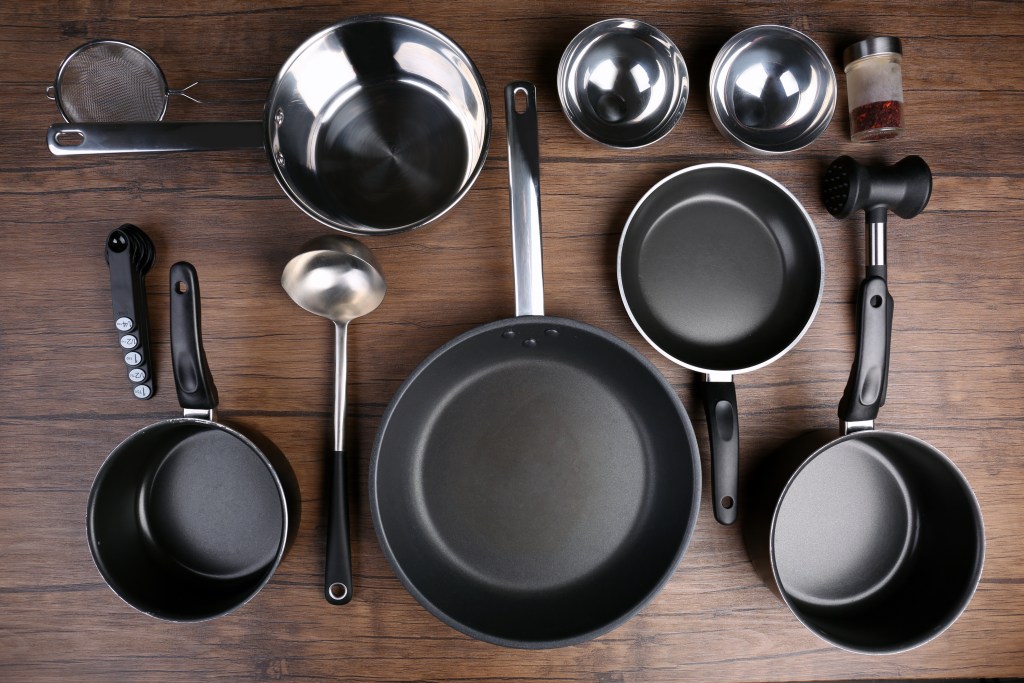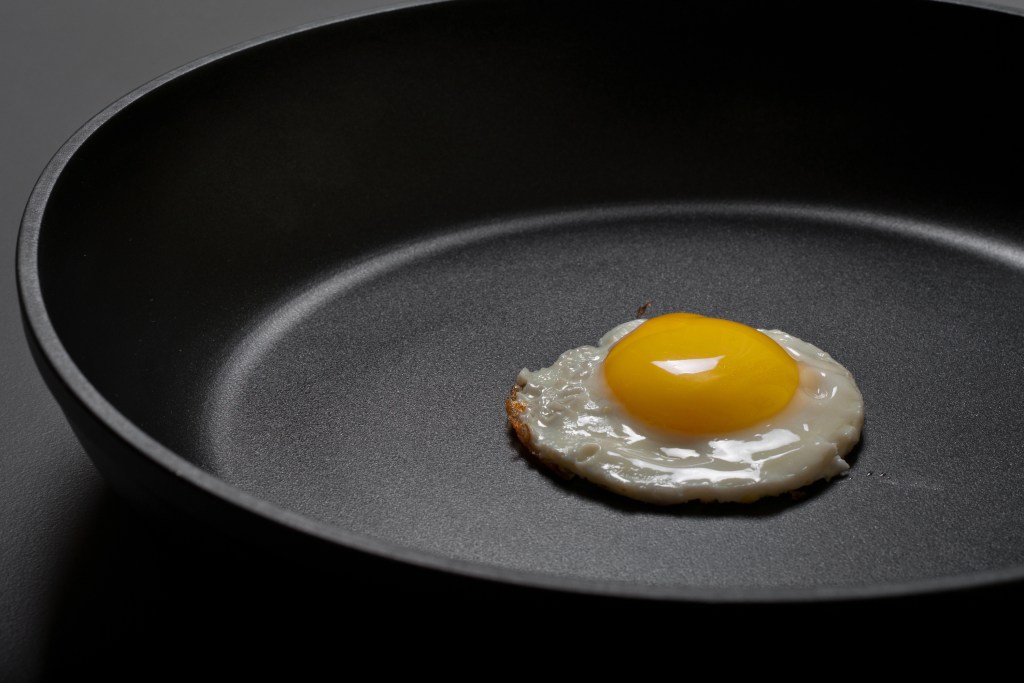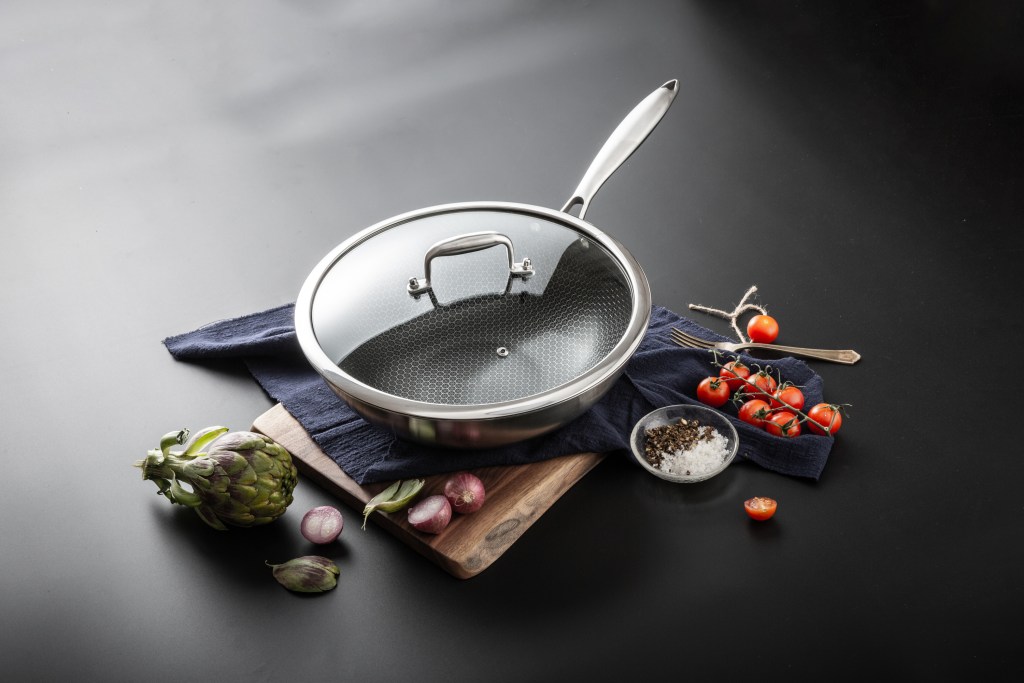Eggs that flip effortlessly, meat that slides off the pan, spaghetti sauce that doesn’t stick, and easy, breezy cleanup with minimal scrubbing. When Teflon-coated nonstick cookware was introduced to kitchens in the 1940s, it seemed like every cook’s dream. But when it came to the health effects, it turned out to be more like a nightmare.
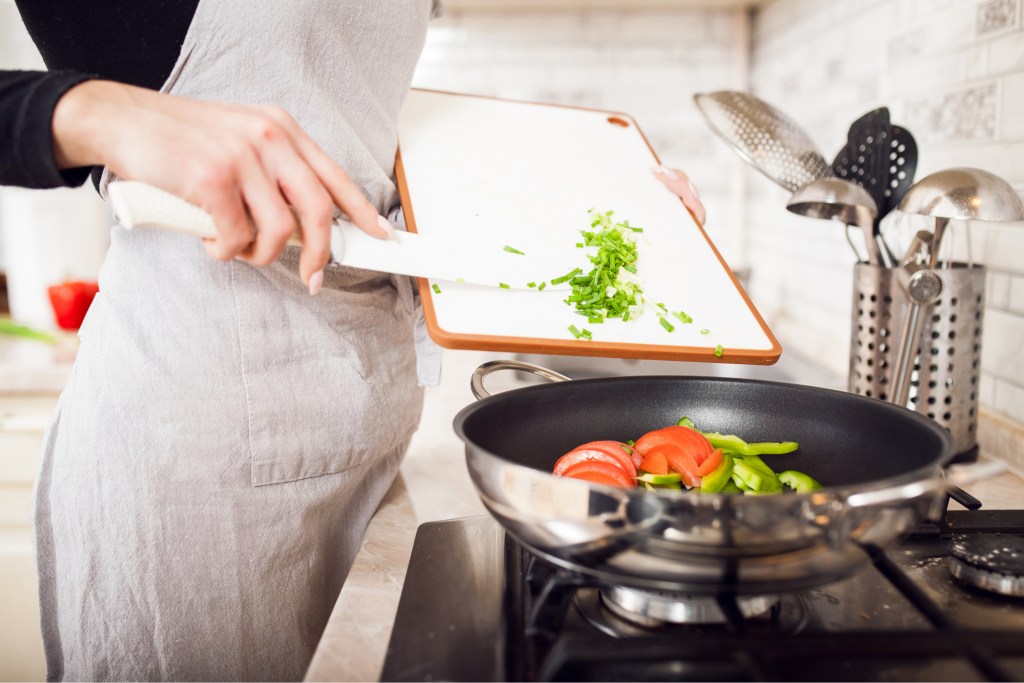
The “magic” behind Teflon’s nonstick coating came from the manmade chemical polytetrafluoroethylene or PTFE. In 1951, perfluorooctanoic acid, or PFOA, another manmade chemical, was added to Teflon during the manufacturing process. Both PTFE and PFOA belong to a class of chemicals known as PFAS, or per- and polyfluoroalkyl substances, a group of manmade chemicals that have been used in the U.S. since the 1940s. Exposure to PFAS has been linked to adverse health effects because the substances accumulate in the body over time and can’t be eliminated. By the early 2000s calls to ban PFOA grew loud after studies in animals and humans found exposure could lead to cancer, infertility, and other health issues. DuPont, the makers of Teflon, agreed to voluntarily phase out the use of PFOA in Teflon by 2015.
Today’s Teflon-coated cookware is labeled as being “PFOA-free,” while other nonstick options, such as ceramic cookware, are touted by manufacturers as being even safer alternatives, often free of PFOA and PTFE. But are these so-called “new and improved” products really safe? To get to the truth requires a little digging and some understanding of the science behind nonstick products.
The science, dangers of PFAS
Teflon was discovered by Roy J. Plunkett, a DuPont chemist, in 1938, by accident when he was working on finding safer refrigerants. During an experiment, Plunkett inadvertently created polytetrafluoroethylene, or PTFE, a white, waxy, and very slippery substance. The polymer nonstick properties were due to the molecular structure of PTFE – in basic terms, PTFE is made up of fluorine atoms surrounding carbon atoms – because fluorine creates a chemical shield that repels other materials.
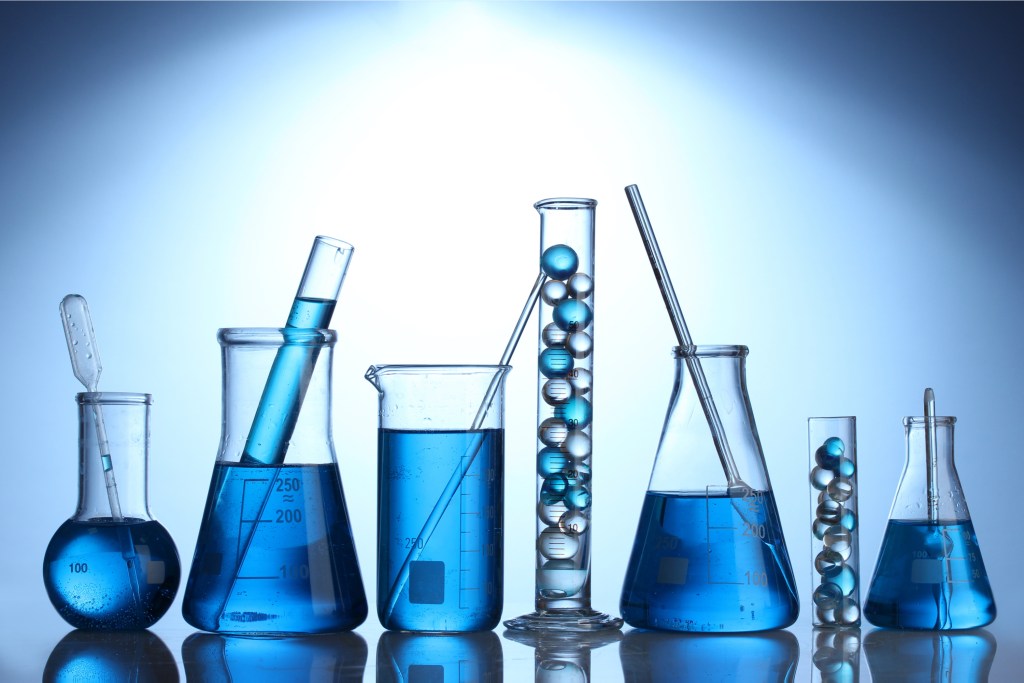
DuPont added PFOA, also called “C8” because it contains eight carbon molecules, to Teflon around 1951, because it smoothed out lumpiness in the freshly manufactured product. The use of PFOA wasn’t limited to cookware. Because of its action as a high-performance fluoropolymer, PFOA was added to food packaging, firefighting foam, stain-resistant carpet, water-repellant cloths, and other products.
Both PTFE and PFOA are PFAS, a class of chemicals known as “forever chemicals” because they don’t break down in our bodies or the environment, but instead accumulate over time. PFAS were found in the blood of 98% of those sampled in a U.S. study.
Starting in 1998, multiple lawsuits were filed against DuPont by residents around the West Virginia plant where Teflon was made who claimed to suffer illness linked to pollution and contaminated drinking water from the plant. Studies also began linking PFOA with numerous health issues including infertility, kidney disease, and certain cancers. In 2017, 3,550 personal injury claims related to PFOA contamination from the plant were settled for $671 million, with the company admitting no wrongdoing.
Is the new generation of nonstick cookware safe?
In 2006, the EPA launched a global stewardship program asking eight companies, including DuPont, to eliminate PFOA from products and emissions by 2015. All eight companies met the goals, and since then, there’s been no PFOA in Teflon. But, that doesn’t mean as much as one might think, according to Marty Mulvihill, PhD, associate director of the Berkeley College Center for Green Chemistry, and co-founder of Safer Made, a venture capital fund investing in companies and technologies that reduce human exposure to harmful chemicals.
“When PFOA was banned it changed how Teflon is made. It didn’t change what Teflon is,” says Mulvihill. “Now, in many applications including the manufacture of Teflon, they are using shorter chain molecules that are ‘cousins’ to those that were banned.”
According to Mulvihill, today’s Teflon is simply a horse (or pan) of a different color, so to speak. Instead of PFOA’s eight carbon molecules surrounded by fluorine, chemicals used now might contain only six or four carbon molecules surrounded by fluorine. “They are all related chemical cousins. That means the function is similar and from a health standpoint there are still concerns,” says Mulvihill.
Instead of PFOA, Chemours (the chemical company spun off from DuPont in 2015 that now makes Teflon) is using GenX (hexafluoropropylene oxide dimer acid), while other manufacturers are turning to perfluorobutanesulfonic acid, or PFBS, to make nonstick cookware, according to Gay Browne, personal environmental health adviser, and author of Living with a Green Heart: How to Keep Your Body, Your Home, and the Planet Healthy in a Toxic World.
“These are still PTFE pans, just with a small ingredient change. Even a cookware brand labeled ‘PFAS-free’ could contain a similar chemical,” says Browne, adding that the Environmental Working Group has stated that GenX chemicals are nearly as toxic as those they’ve replaced.
Both GenX and PFBS belong are still in the PFAS class of chemicals. Instead of being fat soluble like PFOA, the new, shorter chain PFAS are more water soluble, and might pass through the body eventually, although early toxicology studies are showing they could accumulate in certain body organs instead, says Mulvihill.
“The fact that these chemicals don’t break down very well is still true, although where they go in the body is different, and that’s where the chemical industry has preyed on complexity,” says Mulvihill.
Studies are suggesting there could be a link between GenX and liver and reproductive problems. A Facebook group called North Carolina Stop Gen-X in Our Water was formed by residents around the plant where Teflon is made due to concerns about water contamination.
What about high heat and scratches?
You’ve probably heard that it’s safe to use nonstick cookware as long as it doesn’t get too hot or the surface isn’t starting to break down. According to Chemours, nonstick pans can be heated to 500 F without damaging the finish, and particles from the nonstick coating are safe, even if ingested.
“At low temperatures, PTFE has technically and scientifically proven to be a stable, inert compound. I will wholeheartedly overrule science when applying this theory to pots and pans, as science will never be able to factor in the element of human error, the handling of these pans when cooking with them, washing them, or putting them away in the cupboard,” says Browne. “I have been cooking for over 50 years and I have yet to see a Teflon pan that doesn’t have one scratch on it, including the ones that come out of the plastic packaging wrap.”
PTFE begins to break down at around 392 F, according to Browne. “If this is not enough to send you gasping for air, know that above about 500 F, PTFE begins to give off fumes that cause flu-like symptoms in humans and are lethal to birds,” she says, referring to a condition known as “polymer fume fever.” “You can hit that temperature within minutes of high heat, depending on your stove. If [cookware is] scratched, you’re increasing your risk of exposure to a toxic chemical.”
Even if you can’t see any scratches, nonstick cookware’s coating is still prone to degrading if it’s heated, says Mulvihill. “They will all have some amount of leaching and degradation. There are things you can see and things you can’t see,” he adds.
Alternatives to nonstick cookware
One of the biggest trends in cookware is ceramic nonstick products, which are often labeled as being free of PFOA and/or PTFE. And while this is true, the issue is ceramic cookware products are still using another set of those pesky “chemical cousins” to PFAS – often perfluorinated silicone — to get the nonstick effect, according to Mulvihill.
“They are modified with the same carbon-fluorine chemical chains,” says Mulvihill. “Instead of coating plastic with Teflon, they’re coating sand or other minerals with the same family of chemical compounds. In some cases, they’re trying to do the right thing. If you look at flurosilicones, they likely have slightly higher degradation temperatures, but there still are concerns about leaching, and it’s still part of the same class of chemicals.”
Ceramic is more resistant to scratching but the coatings, especially if sold outside North America, might contain a high lead concentration, says Browne. She advises looking for a reputable brand that’s PFOA-, lead-, and cadmium-free. “If you do like to use ceramic-coated cookware, you may want to consider replacing it every six to nine months, as that’s about the amount of time it takes for the ceramic coating to chip or wear down, exposing the surface underneath it” which may contain toxins, she adds.
If you’re looking for safe cookware for daily use, Mulvihill says stainless steel, high-carbon steel and iron are all sound choices. “All of it is fine if you stay away from nonstick,” he adds.
Browne says she’s a fan of All-Clad cookware and cast iron cookware. “I like using cast iron pans when searing meats and chicken, as well as cooking crispy pancakes,” she says. “Cast iron uses less oil, avoids harmful chemicals and gives you a little extra iron in your diet.
Browne adds that it’s important to season cast iron pans before use. “If you take care of a cast-iron pan, it will outlive you and get better with use,” she adds.
If you’re still stuck on nonstick
If you just can’t part with your Teflon or other nonstick pots or pans, Browne offers the following advice to make usage safer:
- Replace cookware that’s damaged or worn out. Replace all cookware every year.
- Preheat with low to medium heat and don’t leave empty pans on a hot burner.
- When using extremely high heat, turn on exhaust fans or open windows.
- Use wooden utensils or nonmetal utensils when cooking so the pan’s surface won’t get scratched. Don’t use abrasive cleaning materials.
- When storing pans, put them between a soft cloth if stacking them, or hang them up to dry on a pot rack.
And if you can’t fathom the thought of trying to flip eggs in a pan that isn’t nonstick, try to keep it a “use only as necessary,” product, advises Mulvihill. “Use it more modestly. Don’t use it as your go-to for everything,” he says. “Limit its use and use it at lower-temperature applications.”
BlissMark provides information regarding health, wellness, and beauty. The information within this article is not intended to be medical advice. Before starting any diet or exercise routine, consult your physician. If you don’t have a primary care physician, the United States Health & Human Services department has a free online tool that can help you locate a clinic in your area. We are not medical professionals, have not verified or vetted any programs, and in no way intend our content to be anything more than informative and inspiring.
